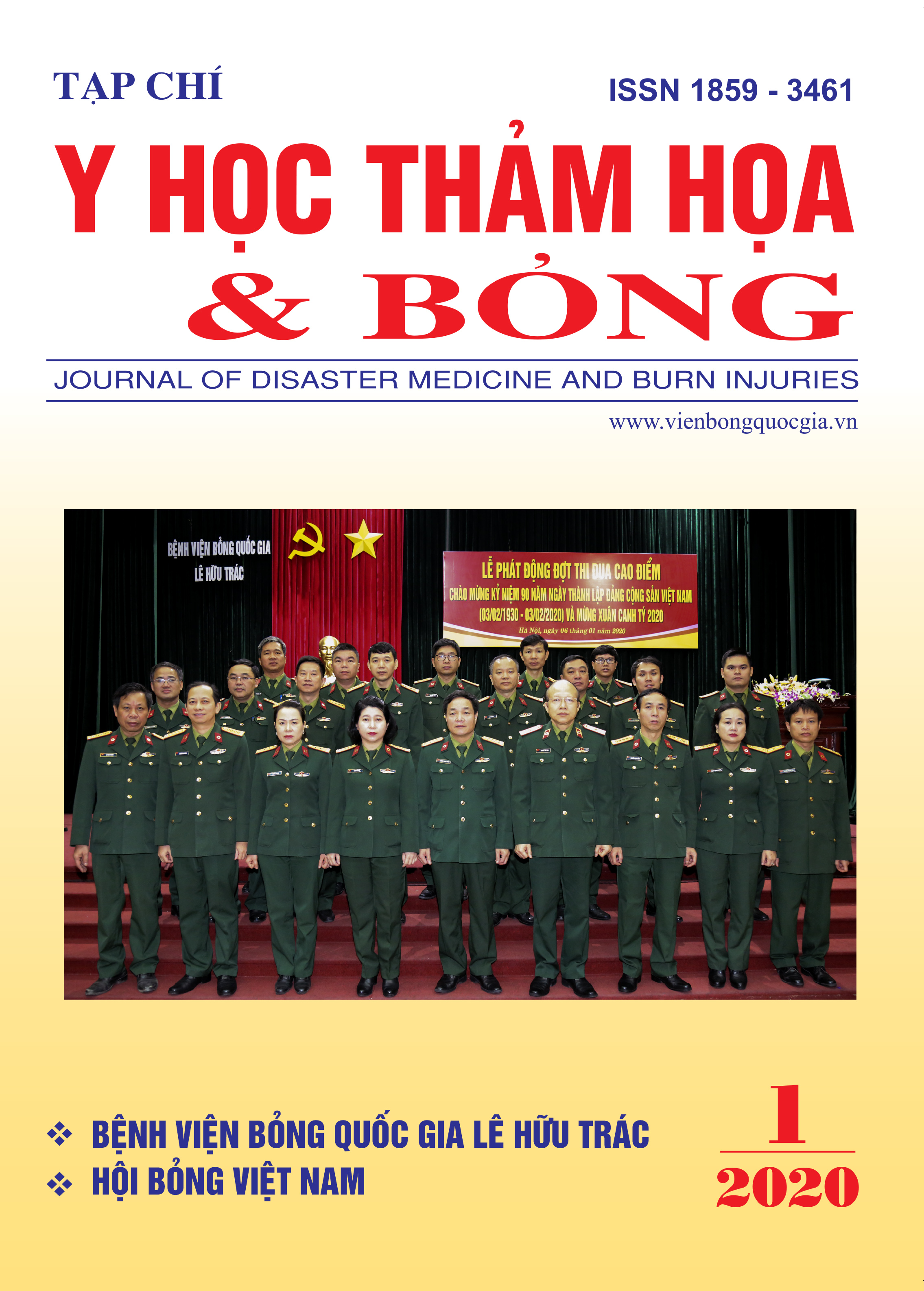Choosing anesthesia method for excision and skin graft in the elderly patients with severe co-morbidities (Case report)
Main Article Content
Abstract
Introduction: General anesthesia for necrosis excision in the elderly with the third-degree heart failure, hypertension, diabetes mellitus type II, pneumonia, heart ischemia disease, right coronary artery stenosis, femoral venous thrombosis inserted a filter in inferior vena cava is a challenge for anesthetist because risk of more severe heart failure, myocardial infarction, and stroke can occur during and after surgery.
On December 5th, 2019, general anesthesia for necrosis excision and skin graft on the case with severe co-morbidities was made successfully.
Case report: An 88-years-old woman had a history of the third-degree heart failure, hypertension, diabetes mellitus type II, pneumonia, heart ischemic disease, right coronary artery stenosis, femoral venous thrombosis inserted a filter in inferior vena cava, bowel obstruction surgery.
On November 28th, 2019, she was admitted to the intensive care unit in national hospital of burns in condition with consciousness, obesity, body temperature 37.30C, irregular pulse rate 78bpm, blood pressure 170/90mmHg, SpO2 99%, spontaneously tracheostomized ventilation, diminished breath sounds on bilateral bases, scattered fine crackles, soft and distensive abdomen. Local injury included 3% total surface body area of necrosis and bad granulation tissue on abdominal wall.
On December 5th, 2019, necrosis excision and skin graft on abdominal wall under general anesthesia was made.
Conclusion: General anesthesia for necrosis excision and skin graft on the elderly with severe co-morbidities requires detailed physical examination, optimal preoperative preparation, careful general anesthesia planning and intraoperative monitoring. General anesthesia with less hemodynamically affecting anesthetics and sedatives as well as analgesics is an important factor for successful surgical general anesthesia in the case.
Article Details
Keywords
The elderly, co-morbidity, general anesthesia, necrosis excision and skin graft
References
2. Bộ môn gây mê hồi sức trường đại học y Hà nội (2006), “Gây mê mổ những người mang bệnh tim” Bài giảng gây mê hồi sức dùng cho đại học và sau đại học tập II, Nhà xuất bản y học, Hà nội, trang 262-273.
3. Sota Omoigui (1995), The anesthesia drugs handbook, second edition, Mosby-Year Book Inc, Baltimore, USA, p.127-232
4. Wilton C. Levine (2010), “Chapter 11. Intravenous and Inhalation Anesthetics” Handbook of Clinical Anesthesia Procedures of the Massachusetts General Hospital, eighth edition, Lippincott Williams & Wilkins, Philadelphia, USA, p.150-164


